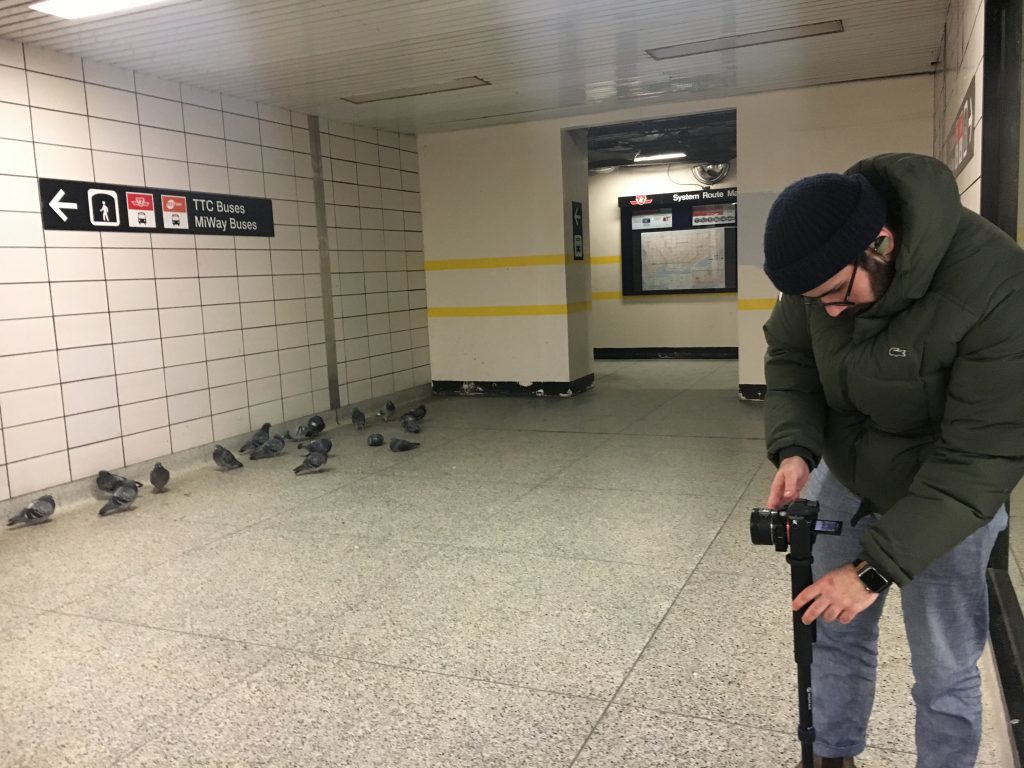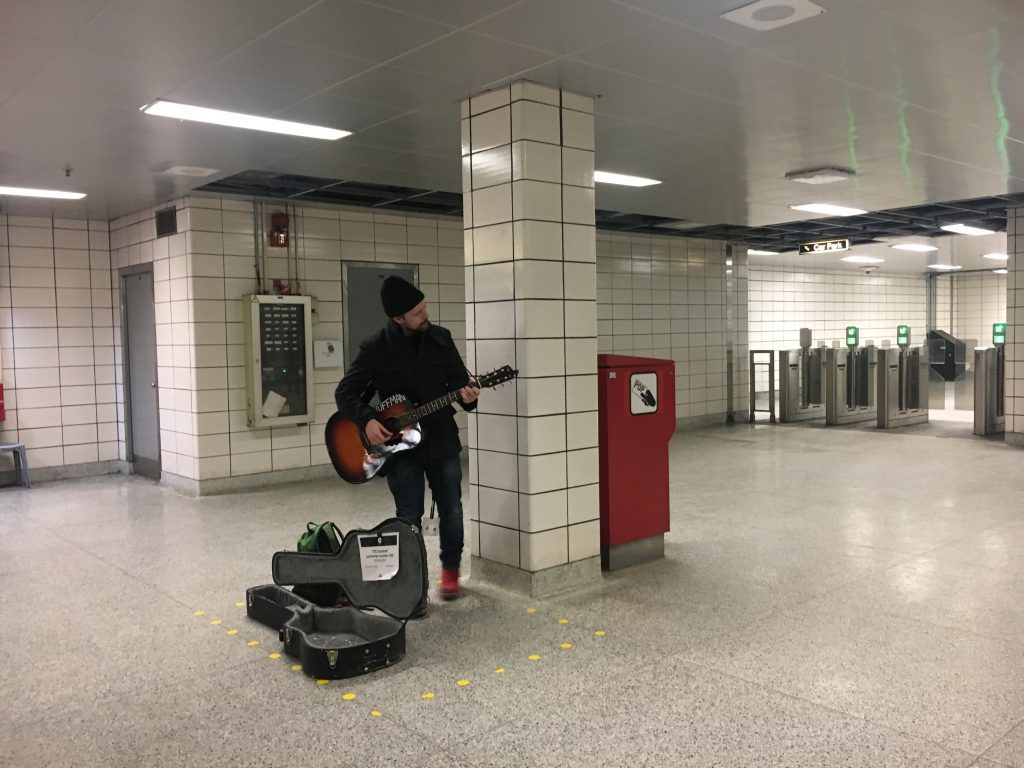By Mia Maaytah
The job of mostly rags and barely any riches
Daniel Berno decided to take a quick break during work one day, and stepped outside for a cigarette. With his vest on and thoughts of disgust, he could not wait to get some fresh air. He had been working in the tunnels for years, cleaning up other peoples’ mess, watching the leaks worsen, smelling the smells get smellier, and hearing the constant patters of construction nearby. Islington Station was deteriorating and that day, Berno was not the only one who had noticed.
Standing alone, he caught the eyes of an unkept man who too was craving for a smoke. They conversed and Berno told him he could not have one of his and Berno has learned that his short moment of bliss had been ruined. The man followed Berno downstairs, yet what shocked him was his ability to voice the thoughts Berno had been trying to get away from.
“He was pointing out that the station smells very bad, amongst noticing other issues of the subway,” Berno said. “Even as an outsiders perspective he knew that the station isn’t very well.” Finally, Berno decided to completely extinguish the situation and allow the man to get on the subway.
“I just let him through, I said “‘don’t even worry about it,’” because what else was I supposed to do? I felt very vulnerable.”
Is Islington having a midlife crisis?
Islington Station has gotten busier over the years, and in 2019, some passengers are disturbed by the birds, lack of accessibility, and overall poor maintenance, while and others have accepted its state.
Islington Station has entered its 50th year of existence and has been balancing imperfectly in between success and suffering. Upon entrance into the TTC’s second-most west station, travellers see the destruction that half of a century can do. Walking down the stairs that lead into the tunnel, dripping pipes and ceiling leaks furnish the floor with odorous liquid, garbage bags are stacked and seemingly discarded into different corners, and dozens of pigeons find refuge next to the underground cafe.
Opened and in use since the spring of 1968, Islington Station has seen little change. Initially, the stop, being out so far west, was the only connection that urban residents had to the rest of Toronto and to London, ON. However, as populations grew and more people began using the transportation daily, the TTC planned to renovate the station to support the increase in volume.
Transit Toronto posted an update on their official website in the late 2000’s stating what changes were planning to be made as residents of the Mississauga and Etobicoke area were becoming upset with its inaccessibility and growing number of users.
The article stated that it had become increasingly clear to both staff and daily-users that the station had become in need repair. Their main focus was the concrete deck of the bus terminals that was beginning to show its age, and the need for the subway terminal to become accessible.
In an article posted by Spacing Toronto called, “Kipling and Islington Renovations,” it states that major renovations were set to kick off in in 2008.
“Islington will be somewhat easier to reach by foot once the project is complete, particularly from the northwest sector,” Spacing Toronto said. “The new west side entrance will be roomy, and will offer a new elevator as well as bike racks and a small plaza for passengers to sit. All but one Mississauga bus will be moved to the new Kipling terminal, reducing the congestion there.”
Comparison of Islington Station from its early years to very recent times. Apart from the black and white effect, the tunnels look very similar as they have faced little change
Has Islington been neglected?
In 2013, a report posted by the Toronto Transit Commission posted an update explaining budgeting and plans for the station.
In order for the construction to be complete, it would cost the city $15 million. The Toronto Transit Commission had decided it would be more logical to create a completely new and accessible terminal instead of attempting to fix the old one. Yet, even over 10 years ago the TTC was unclear with the public about how long they estimated this renovation would take.
“However, the timing of Build Toronto’s redevelopment is uncertain, as is the timing of the Metrolinx’s Kipling regional bus terminal which is pivotal to the feasibility of the redevelopment at Islington,” the TTC said.
Construction for the station was approved in 2007 and was set to be completed in 2013, however 12 years later the station remains inaccessible and full of closed washrooms, unfinished ceilings, cracking stairs, and copious leaks.
Another comparison of the underground walking area of Islington Station, In the earlier photo, the space is clean and well maintained. In the recent photograph the station has an opened ceiling, spills on the floor, and stained walls.
Yet, it appears that the city of Toronto has partnered with the Government of Ontario and has been allocating its resources to other subway stations and revamping GO stations instead.
In an article posted on Urban Toronto, it says that a whopping $21.3 billion has invested into the purchase of over 263 new GO buses, 293 new GO train coaches and 16 new GO train locomotives.
As well, the TTC posted that stations such as Dupont, Wilson, and Yorkdale are all to receive upgrades, yet Islington was not mentioned at all.
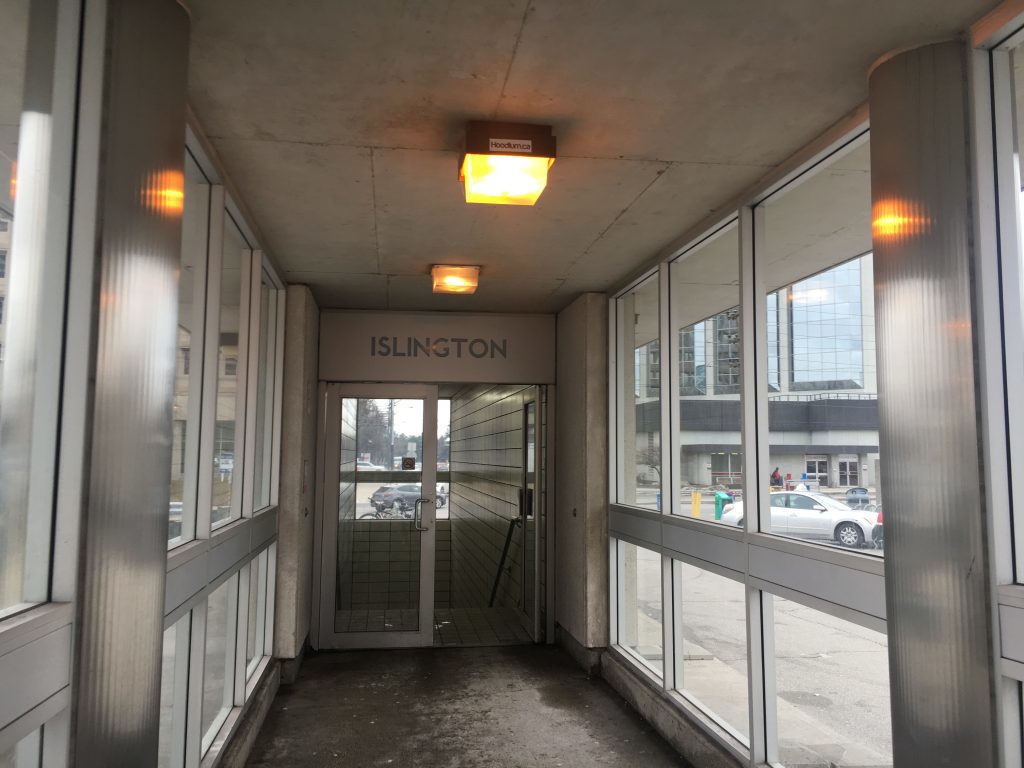
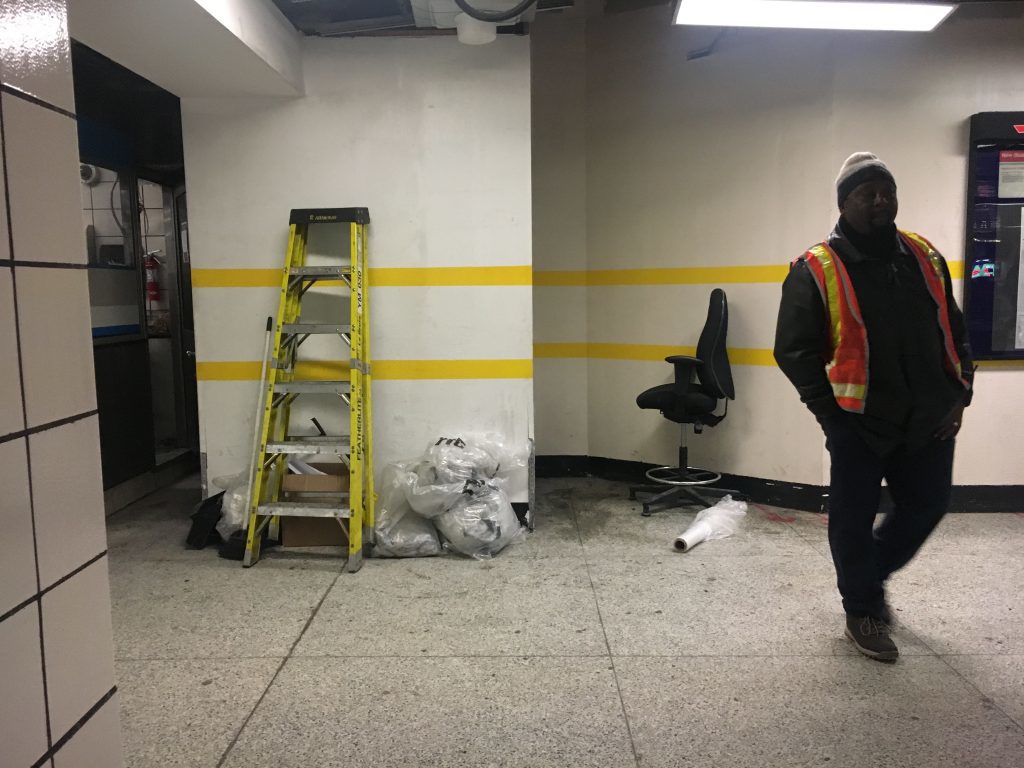
TTC employee standing next to a pile of garbage, a broken rolling chair, and a ladder inside of Islington station on February 5, 2019. (RSJ/Mia Maaytah) 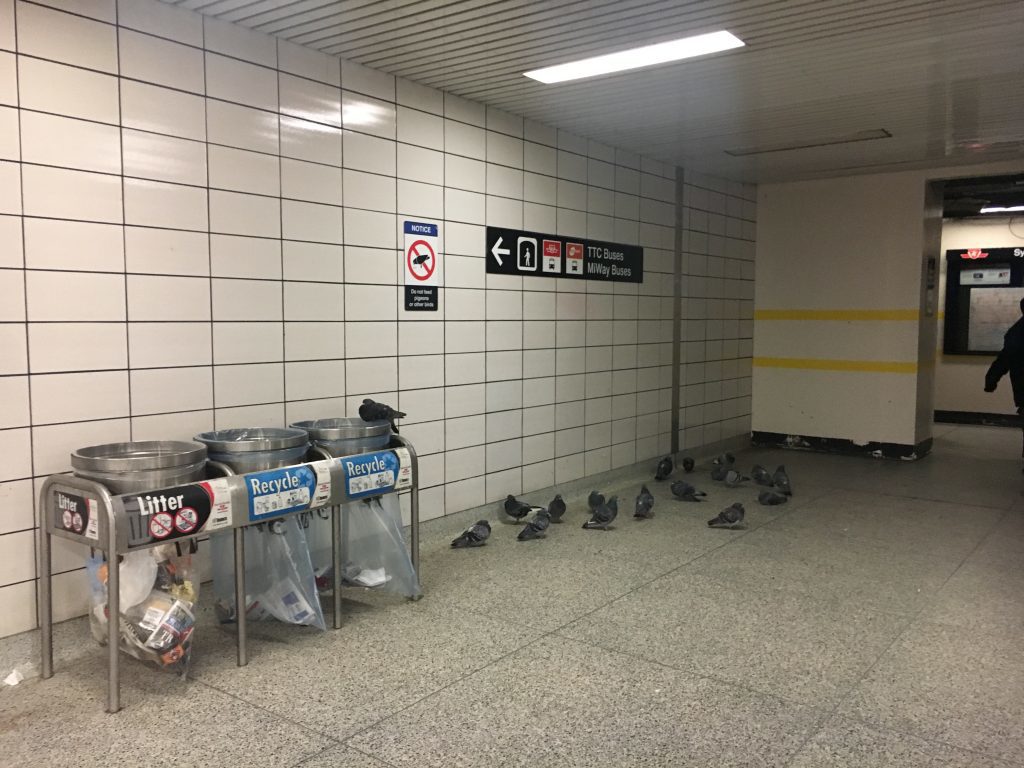
A nook inside of Islington station full of pigeons who are finding shelter from the cold weather. One bird is perched on a garbage can on February 5, 2019.(RSJ/Mia Maaytah)
Though the station enters its 51 year of existence and is lacking major sanitary and cosmetic maintenance, not all passerby are letting the circumstances affect their experience. On the far left, a man is photographing the array of birds resting in the station, finding beauty within the madness. There right shows a man playing his guitar in the midst of the subway, accepting money in exchange for viewers’ appreciation of his craft. Both of these people appear unfazed by the state of Islington station in Toronto on February 5, 2019. (RSJ/Mia Maaytah)
A station for the people, yet not necessarily enjoyed by the people
Due to this delay of not only lacking completion but limited implementation at all, people are becoming frustrated with the state of the things. Online reviews are scattered with complaints and angry words, employees describe the station with distaste, and the community as a whole appears to be growing more and more disturbed with its cosmetic appearance.
Spencer McConnell, a regular user of Islington station, spoke up about his feelings towards his daily commute. Fed up with the state of the station, McConnell addressed how his need to use this certain station is unfavourable and his anger towards its lack of proper sanitation.
“The maintenance of it has gone downhill over the last couple of years. It is absolutely outrageous. You walk there and you’re getting pissed on from above,” McConnell said. “Theres water coming out of the ceiling as if its raining – I’m underground. Its deteriorating, its like an old warehouse.”
The light at the end of the tunnel
Yet, even with all madness, delayed construction, and angry patrons, there seems to be a sort of yin and yang among the tunnels.
Though many people express their hatred, there are also those with an immense appreciation for its roughness. Families smile and joke as they wait on the platform, a photographer was seen capturing the birds as though they were some sort of display, and the ladies working in the cafe laughed alongside their customers.
Matthew Stafford, a young professional in the area says he uses Islington Station every single day in order to get downtown Toronto for work. He stated how the station is something that is used as a convenience, and though it is not his favourite part of the day, its main purpose of getting him from one location to another has yet to let him down.
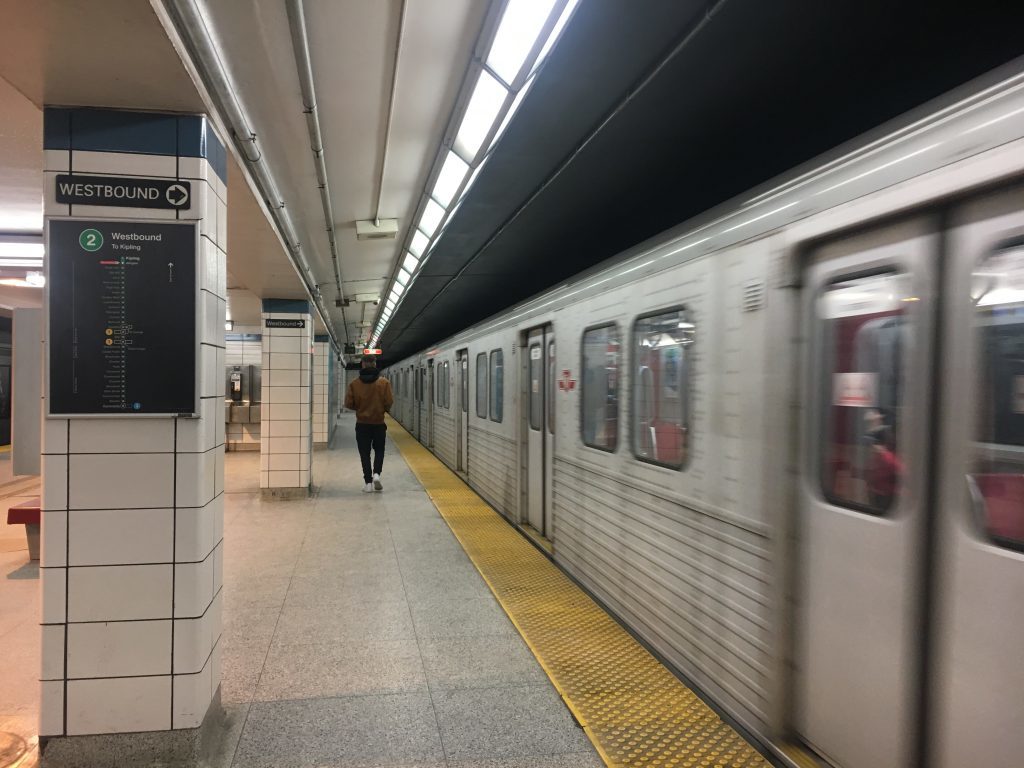
“This is Toronto. Not a lot of people can afford a car, I mean I sure can’t. I use this station to get me from point A to point B and that is it,” Stafford said. “I don’t love it, I am sure nobody does. But it still feels like a luxury to me. I can rely on it to bring me places and bring me back home. It isn’t crumbling, it isn’t on fire, and nothing is ever perfect so why are we so mad? There’s bigger things to worry about than focusing on the smell of a subway station.”

